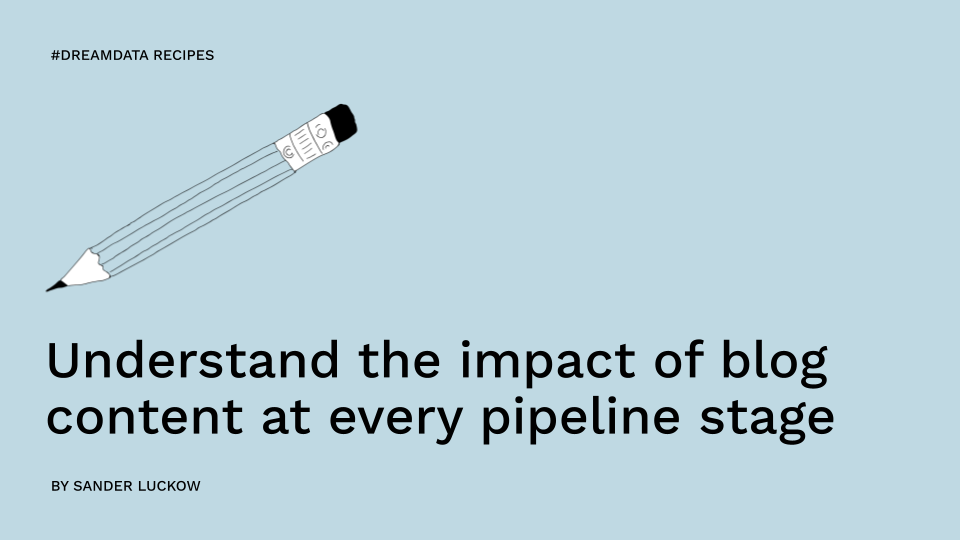#dreamdatarecipes
Understand the impact of blog content at every pipeline stage
Dreamdata's, Sander Lucklow shares insights into Dreamdata's Content Analytics.
Supplementary Guide
These steps allow you to replicate the analysis. For context and more examples, we recommend you watch the video above.
Step 1: Access Dreamdata’s Content Analytics Report
This tool is key for analysing how different content types and categories perform in terms of driving revenue.
Step 2: Evaluate Blog Influence on MQLs
Review the traffic and performance metrics for your Marketing Qualified Leads (MQLs) over the selected time period. Here Sander focuses on the current year.
Filter by Blog to see how your blog pieces are contributing to the generation of MQLs.
Observe the percentage of MQLs influenced by the blog. A low percentage (e.g., 10%) suggests the blog may not be the primary channel for generating MQLs, prompting a deeper funnel analysis.
Step 3: Update the pipeline stage filter
Adjust the content analytics view to a later stage in the sales funnel, such as closed-won deals, to assess the blog's impact on successfully converted deals.
Determine the proportion of deals influenced by the blog before reaching the closed-won stage. A high percentage (e.g., 95%) underscores the blog's critical role in the latter stages of the buyer journey.
Step 4: Get a Granular View of Blog Performance
Dive deeper into the report, with filters, to see how individual blog URLs are performing.
Step 5: Use Insights for Content and Sales Strategy
For content marketers, this data highlights the importance of focusing on content that influences the bottom of the funnel.
For sales, it provides clues about the type of content that resonates with prospects at critical decision-making stages.
Conclusion
By following these steps, you can gain a comprehensive understanding of how your blog content affects different stages of the sales funnel, from initial interest (MQL) to final purchase decisions (closed-won deals).
This approach enables both content marketers and sales teams to align their strategies more closely with customer behaviour and preferences, optimising content creation and distribution for maximum revenue impact.

